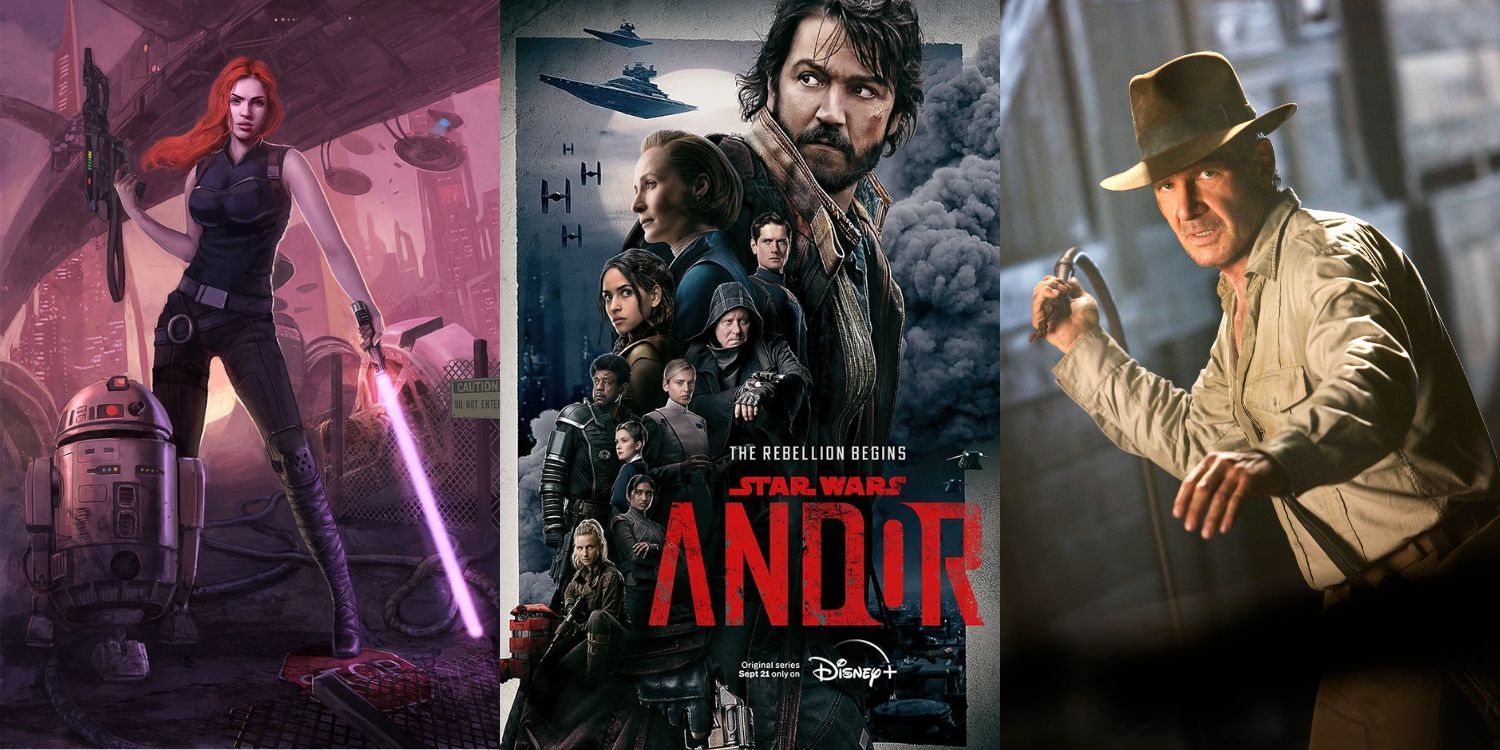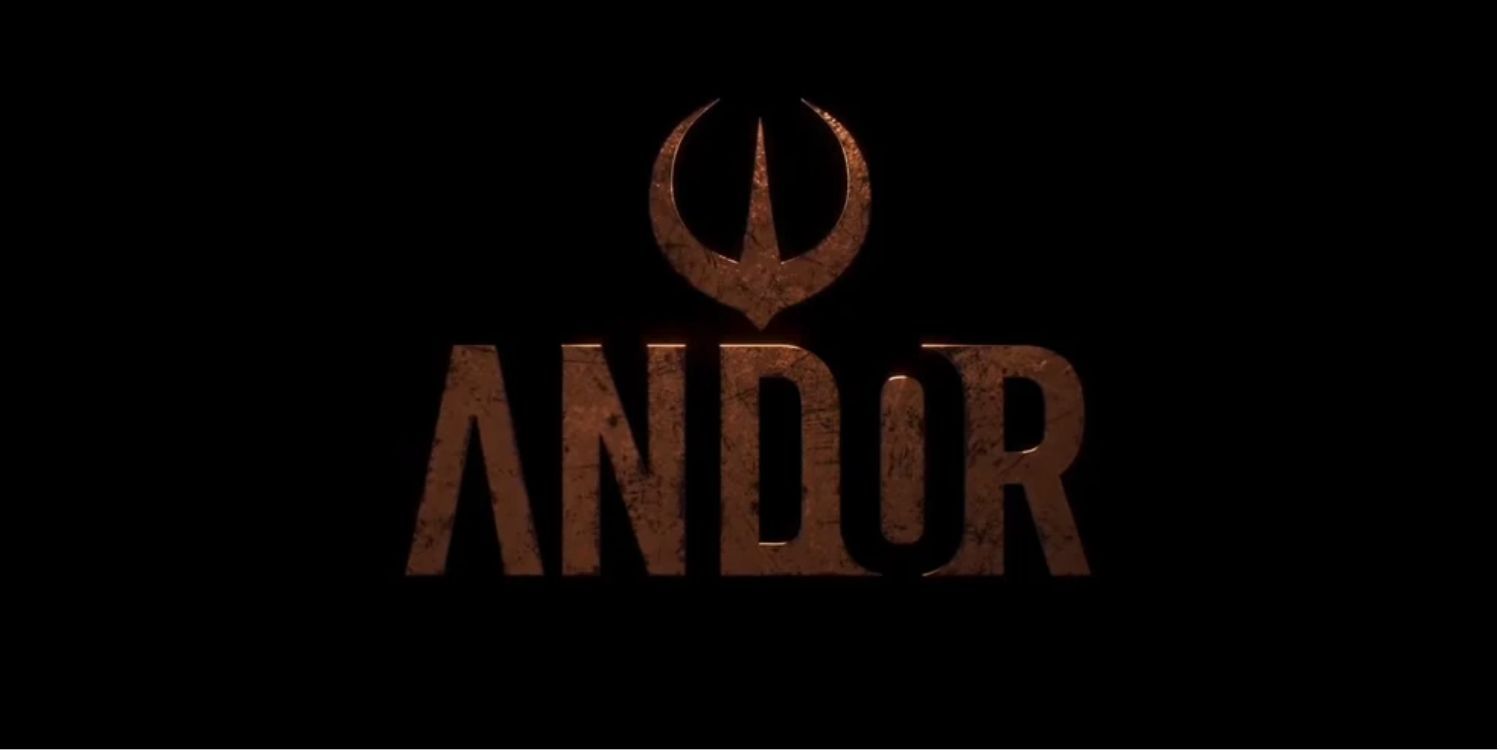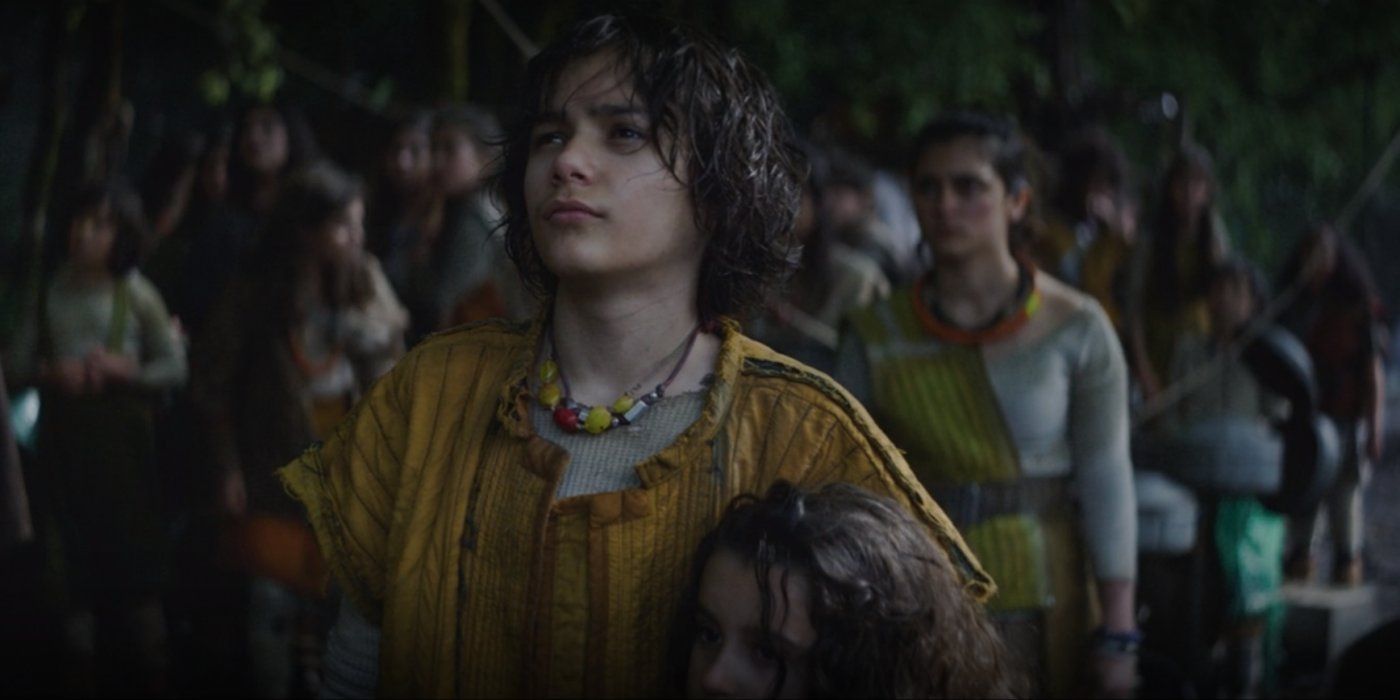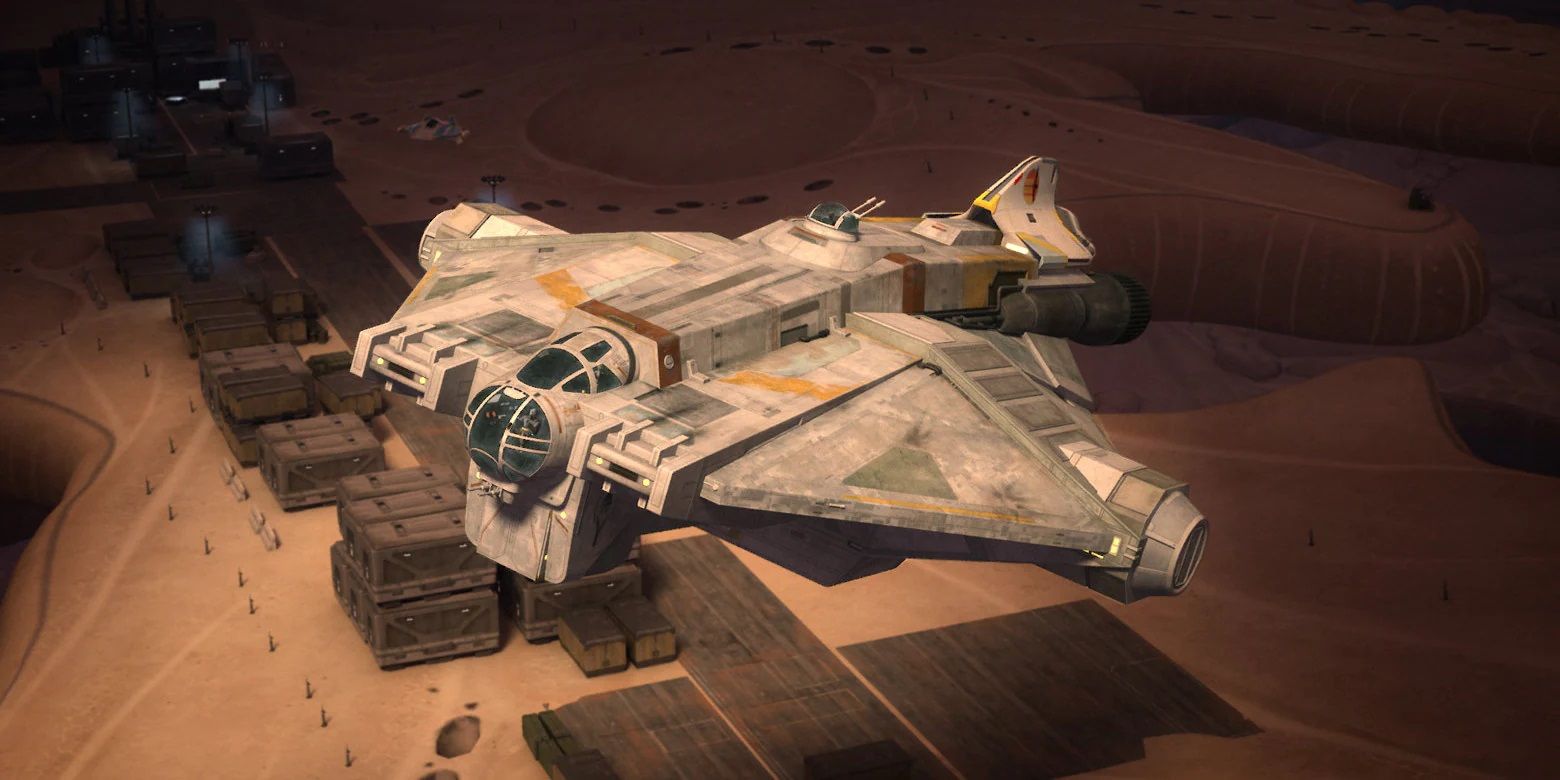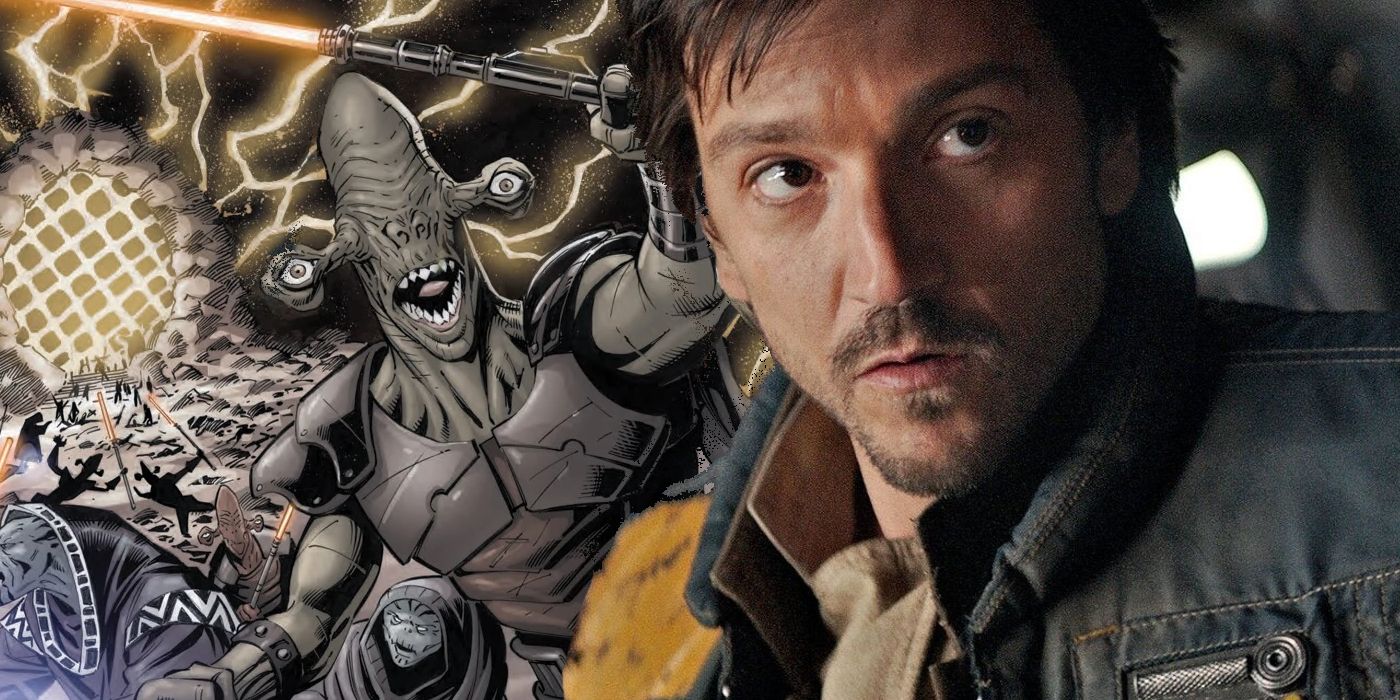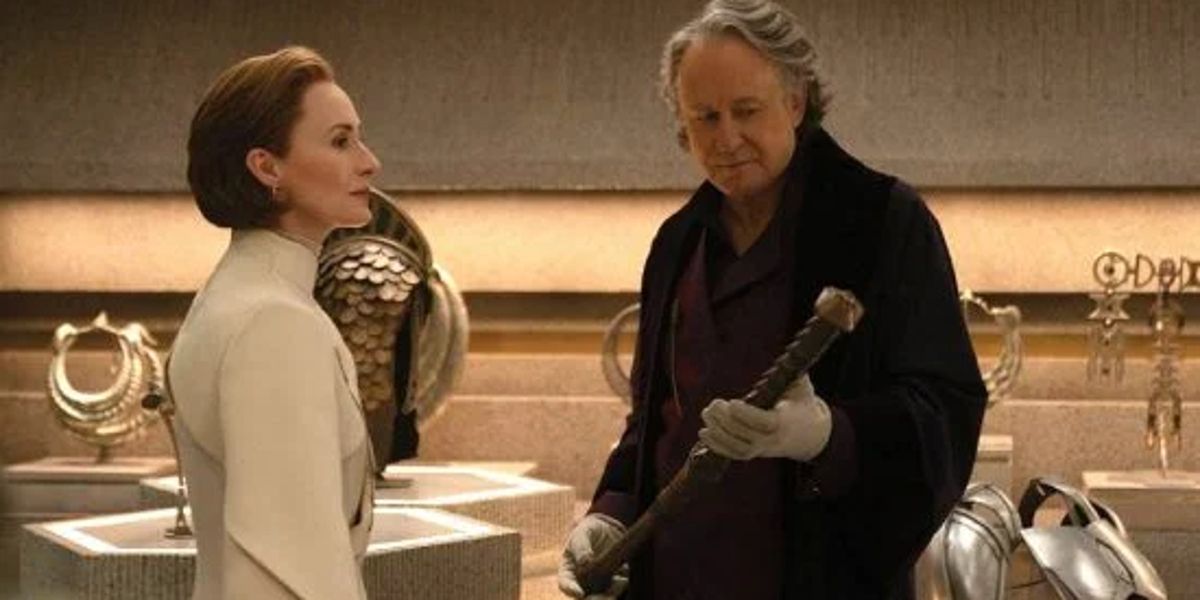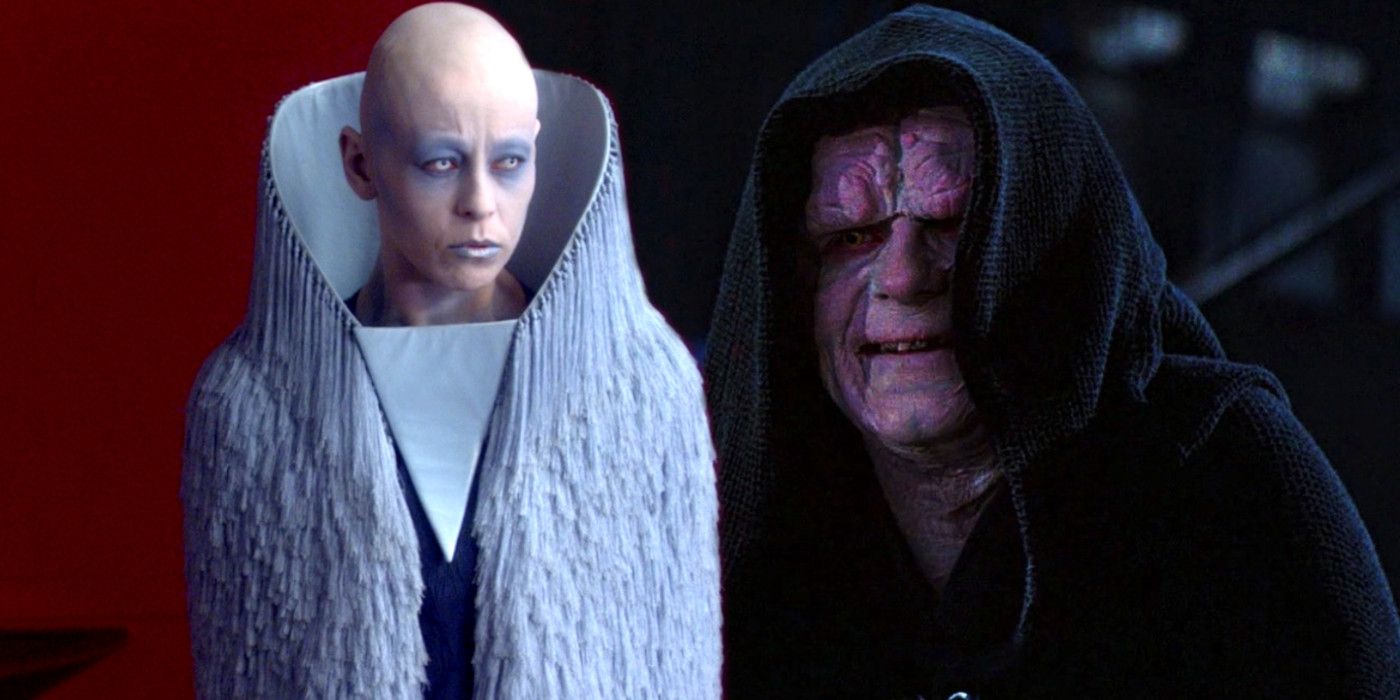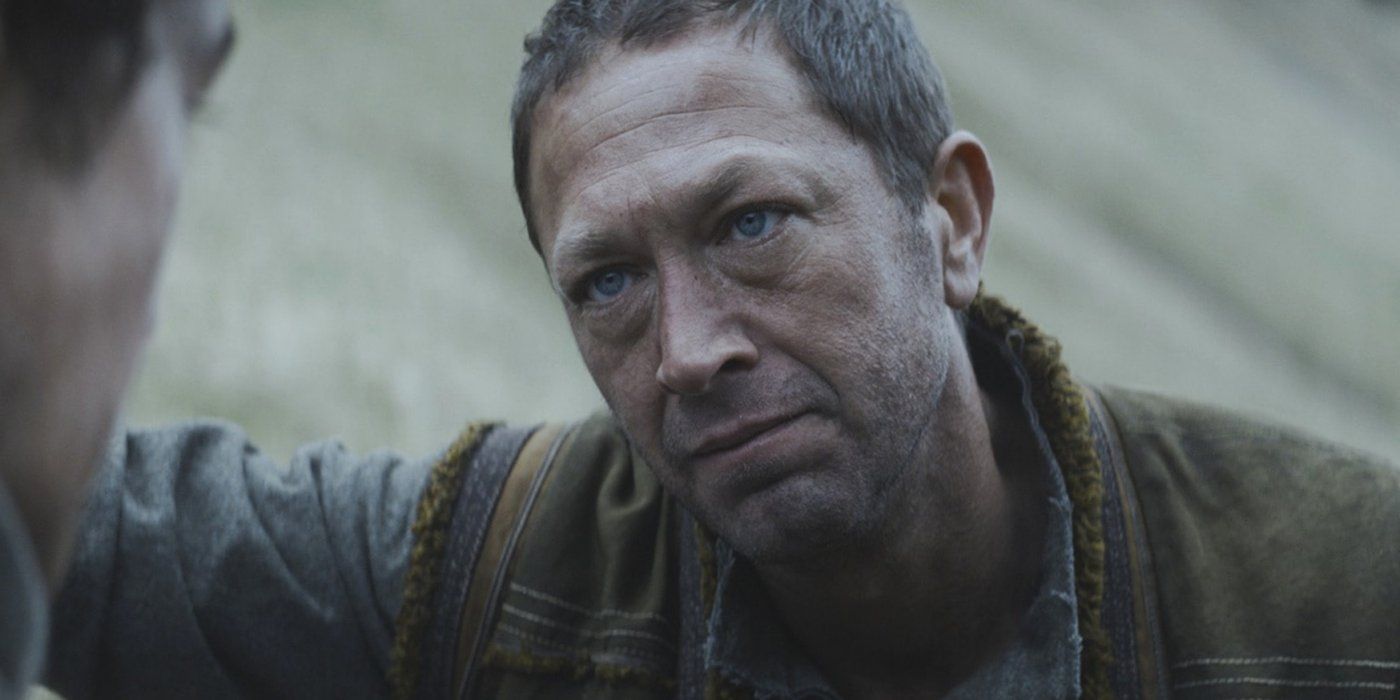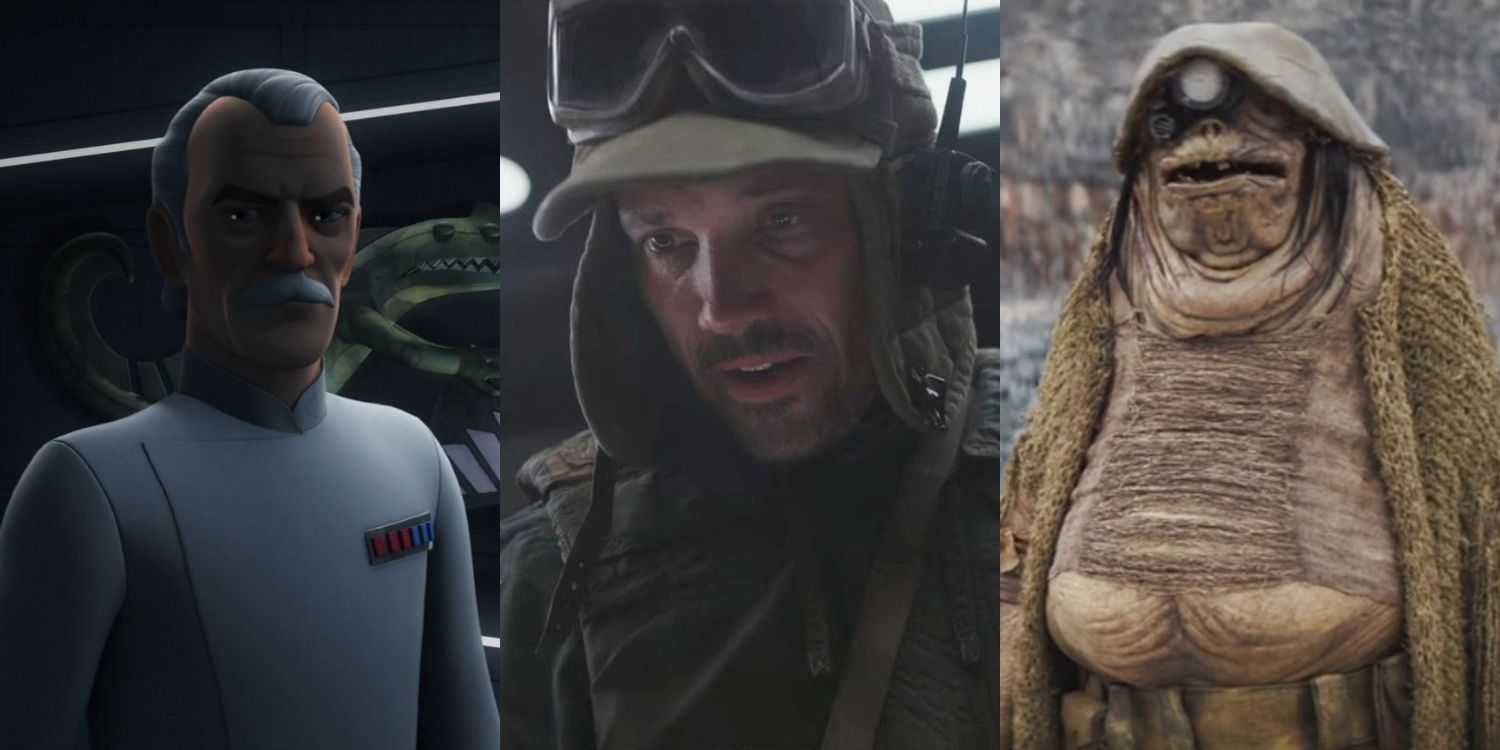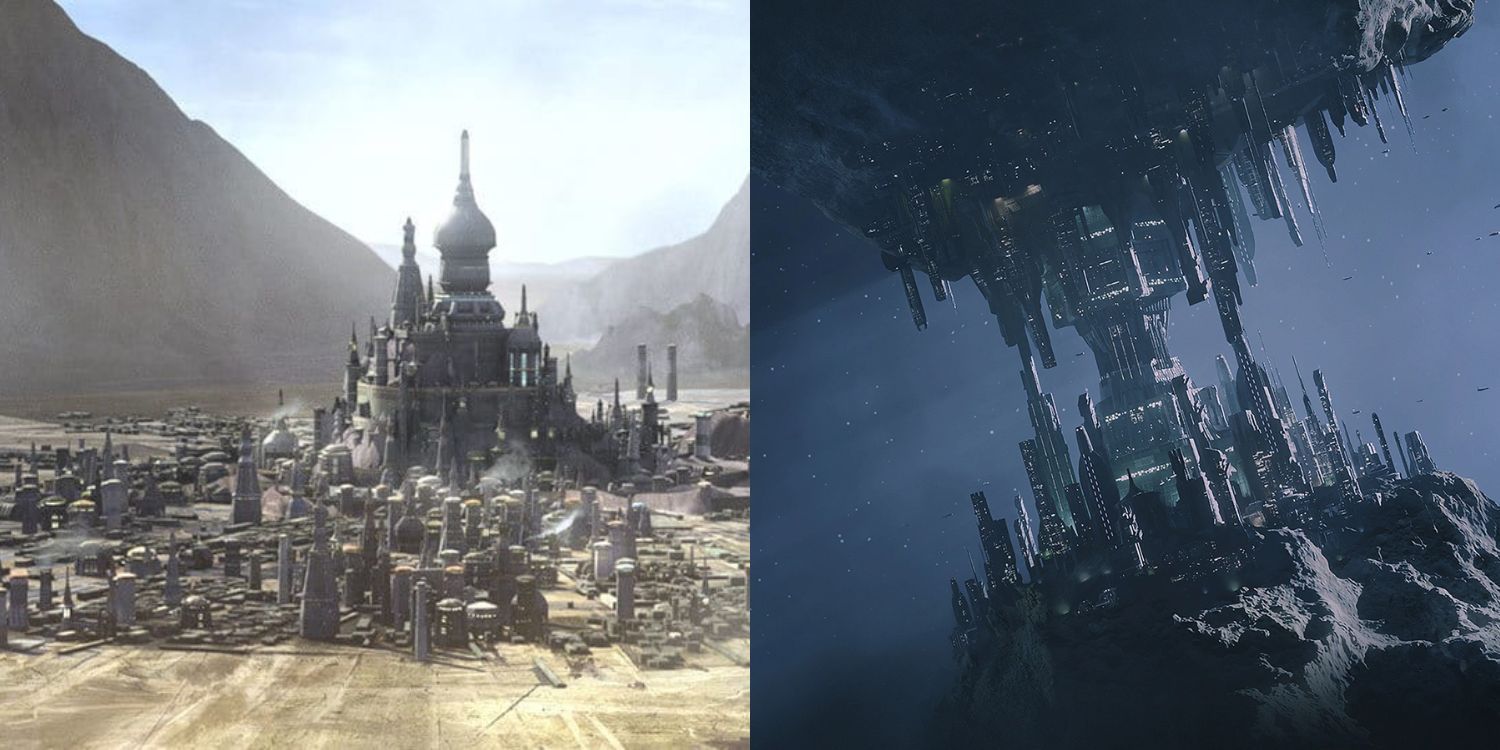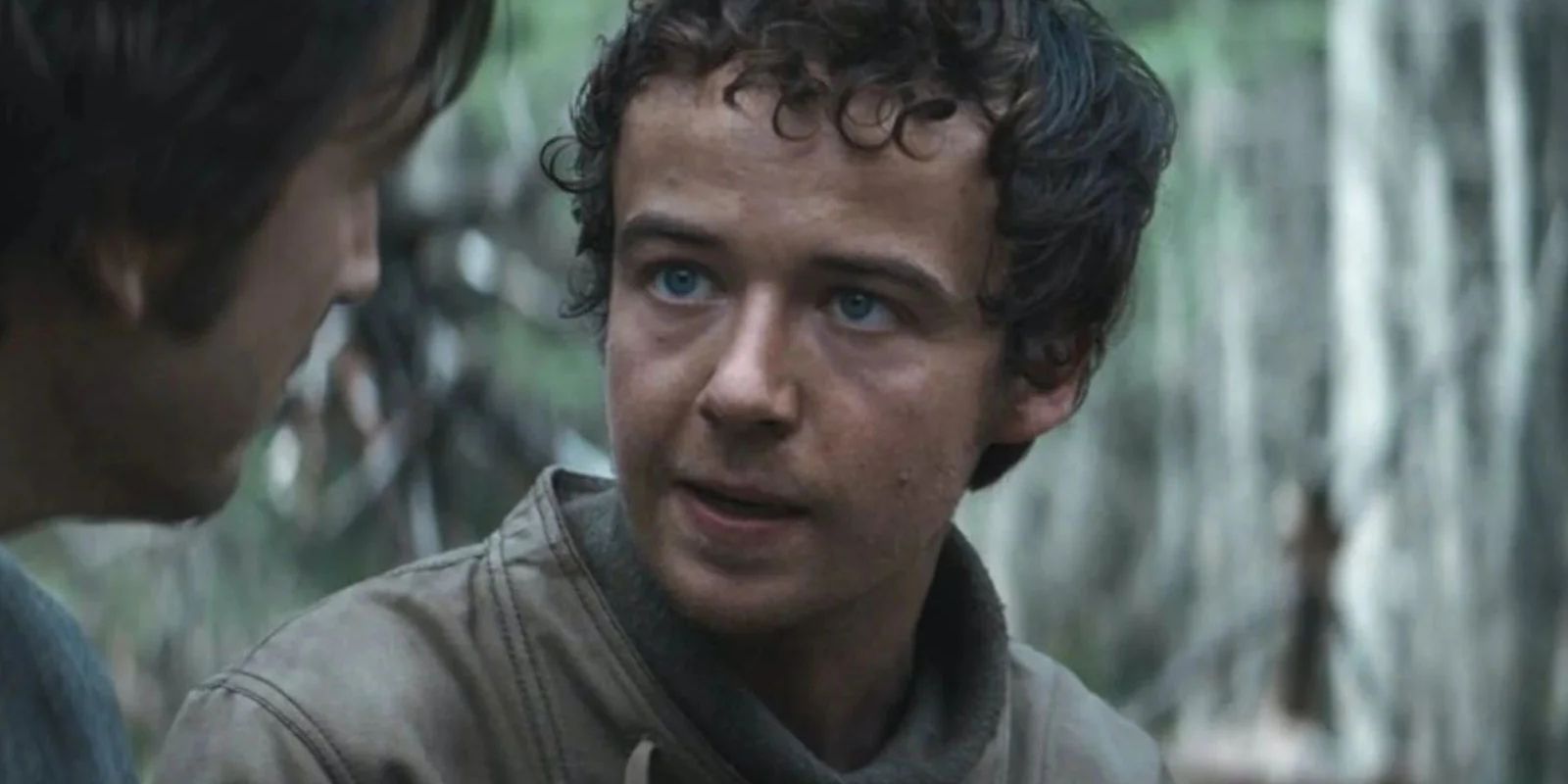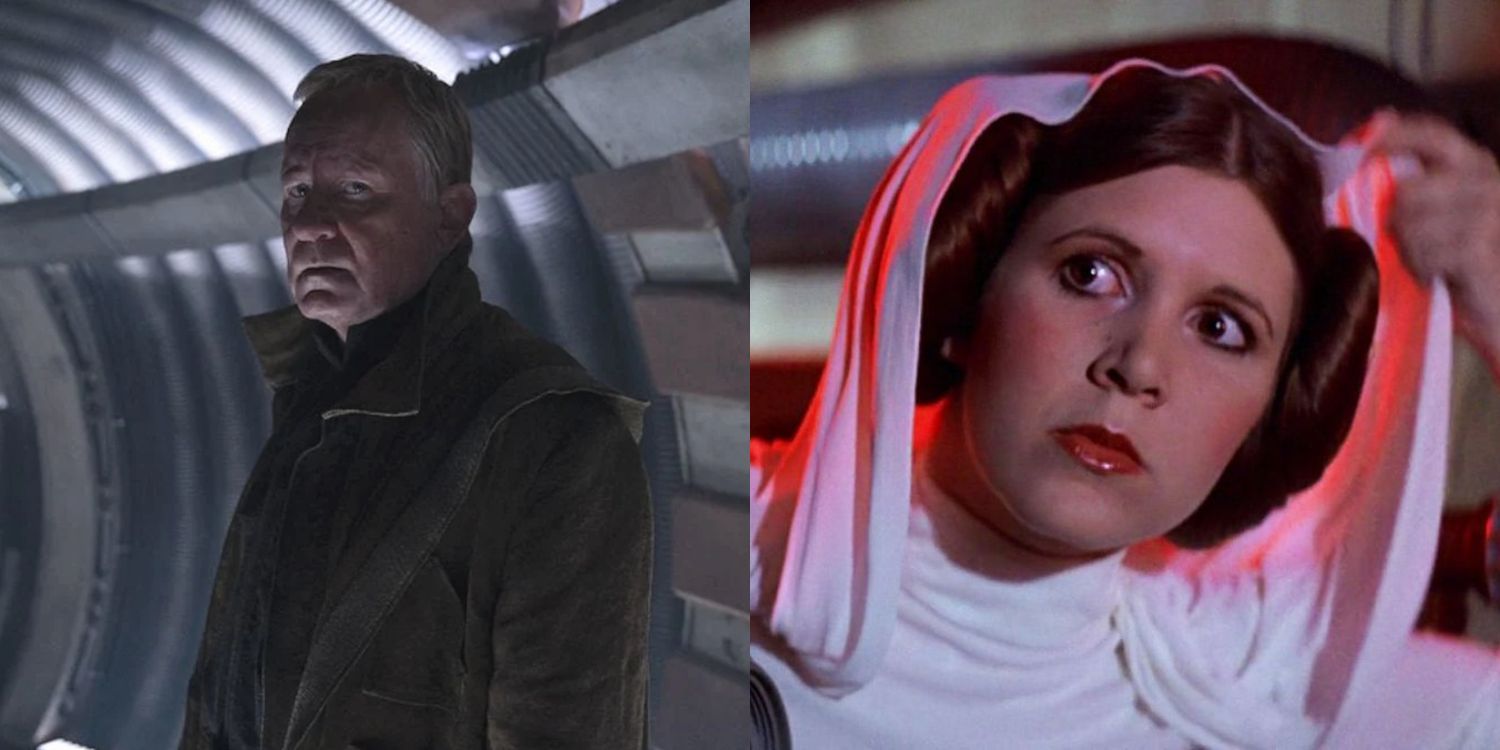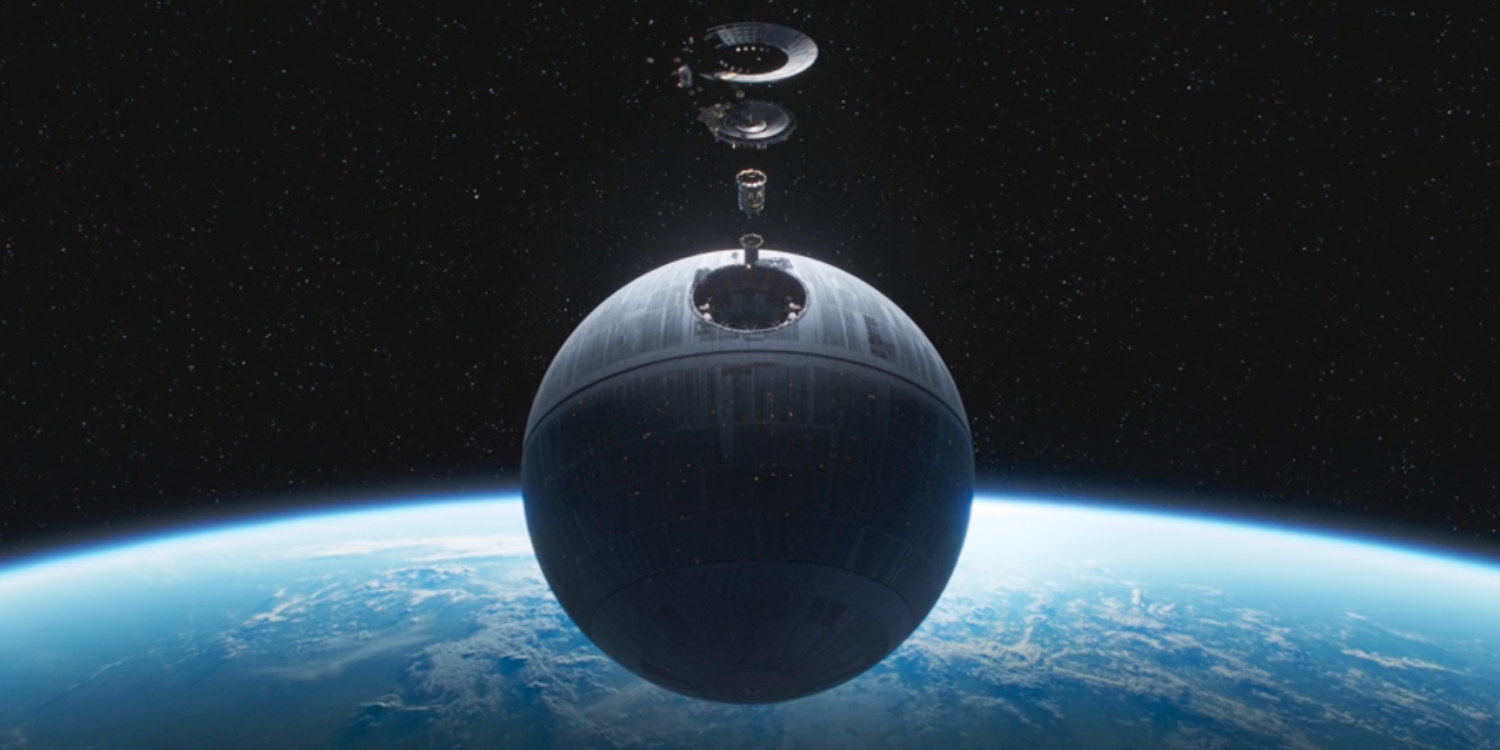Spoiler alert: This article spoils parts of Andor's first season. From the superb writing to the nuanced performances to the sublime visuals, Andor is Star Wars television at its best. However, it hasn’t reached The Mandalorian's heights of viewership, although that can change with the recent news that the first two episodes are available on Hulu and FX.
While some may say Andor is lacking in overt Easter eggs compared to previous Star Wars series, the truth is that it still builds on the franchises’ connectivity with more subtlety. There are still some very cool and fascinating details to appreciate, from thematic and narrative parallels to clever Easter eggs in the background.
The Music
Nicholas Britell took up scoring the music for Andor, and he’s earned shoutouts from audiences online since the premiere episode for his impressive work. As the show progressed, the music got better and better, or rather it developed with the narrative. Specifically, the title theme for Andor grows with each new arc, gaining more and more instruments as the show progresses.
Music and rhythm are important to Star Wars in building atmosphere and tension, and of course, that’s the case in Andor. They play a role in the narrative, especially in the culture of Ferrix. For example, Maarva’s funerary procession starts with the drums and the bell tower, then it grows to encompass the unique symphony of Ferrix instruments.
The Kenari Language
Another unique creative detail in making Andor was the creation of an entirely new language, Kenari. Unlike other shows such as Game of Thrones wherein the show-invented languages, High Valyrian and Dothraki, are translatable and can even be studied, Kenari is a secret known to few. That’s why it's such a surprise that there are no subtitles when Kenari is spoken in the first three episodes.
What makes the Kenari language so special comes from backstage info. Fiona Shaw stated in an interview with New Rockstars that Kenari was solely taught to the children actors, so when Maarva and Clem meet young Cassian, they truly do not understand what he is saying. Both the actors and audiences alike must rely on facial and body language to understand the conversation, which is an interesting creative decision.
The Ghost?
Some cool details are hiding in the background that connects Andor to other Star Wars projects. A big one was the brief shots of what looks like a VCX-100 light freighter in the shipyard on Ferrix. This is the same type of spaceship as the Ghost from Rebels. Of course, this can’t be the Ghost as that ship and its crew would all be active on Lothal around this time. However, some fans still theorized that could mean they’d show up in Andor still.
Other familiar ships seen in the shipyard are a Y-Wing and a T-16 Skyhopper, the same type of ship Luke said he used to “bullseye womp rats” in Episode IV: A New Hope. Andor is seen using a WTK-85A, which the Sith assassin Ochi had used when hunting down Rey and her parents. Furthermore, a Quad Jumper makes an appearance in episode eleven along with a Cantwell-Class Arrester Cruiser.
Rakatan Invaders
Speaking of Luthen, there’s a very interesting theory circulating among the fanbase that he is actually a former Jedi. This first came from the special gift he gave to Cassian in episode four, paralleling when Jyn was given a kyber necklace in Rogue One. He says, “It’s a Kuati Signet. Blue kyber. Sky stone. The ancient world. Celebrates the uprising against the Rakatan invaders.”
This is groundbreaking for its mention of Rakatan invaders, who hail from Legends lore in the seminal video game Knights of the Old Republic. They were an ancient civilization who were supposedly responsible for developing hyperspace travel and were corrupted by the Dark Side of the Force, conquering much of the known galaxy. While this mention doesn’t formally canonize everything from the Legends, it’s a push in the right direction.
Luthen's Emporium Of Star Wars Memorabilia
Other indicators of Luthen’s mysterious past can be found in his shop. It’s a treasure trove for Easter eggs referencing all corners of Star Wars characters, whether in canon or Legends continuity. Specifically, this is what can be seen among his relics of a past age: a Jedi Temple guard mask; a Gungan energy shield; a Twi’lek kalikori; Mandalorian armor; a Wookie battle shield; a Kel Dor breathing mask a tablet referencing the World Between Worlds from Rebels; a mask reminiscent of Dark Lord Starkiller from The Force Unleashed video game; Jedi and Sith holocrons; and even a headpiece eerily similar to what Padmé Amidala's worn.
However, the coolest of them all are a whip encased in carbonite and items resembling Sankara Stones, clearly referencing Indiana Jones. This is a fun nod to another Lucasfilm property and one that is set to return soon with Indiana Jones 5.
Palpatine's Friends
Emperor Palpatine rightfully gets some acknowledgments throughout season one of Andor, but what caught the ears were some references to some of his loyal servants and allies. They were mentioned during one of the Mothma’s dinner parties. On the guest list is Mas Amedda (the Chagrian often seen trailing after Palpatine throughout the prequel series), Ars Dangor, and Sly Moore.
Interestingly, they are all aware of Palpatine's true identity as a Sith Lord. Sly Moore, the Umbaran, is quite special, and someone Mon would not want anywhere near her family or home. She is actually a Force Adept, who would use her abilities to manipulate others and reveal their secrets.
Skeen's Tattoos
The second arc of the show saw Andor join up with a ragtag bunch of rebels, including Arvel Skeen, played by Ebon Moss-Bachrach. There are some very interesting things to note about Skeen. Firstly, the pistol he uses until Cassian kills him will eventually find its way into the hands of Greedo, who will try to use it against Han in A New Hope, but Han shot first. Talk about an unlucky blaster.
Additionally, Skeen has some cool tattoos. One is the Aurabesh translation of “Krayt Head,” an Imperial prison, although the name draws inspiration from the Krayt Dragons of Tatooine. His second and more important one means “By the Hand”, which could reference why he was incarcerated, if for stealing. However, it could be a subtle reference to the Empire’s Hand from Legends, an elite group of assassins who worked for Emperor Palpatine. This would include Mara Jade, the woman who would become wife to Luke Skywalker.
Some Familiar Faces
While Andor doesn’t have the cameos, many have come to expect in Star Wars content, there are still some cool familiar faces. The most obvious are Forrest Whitaker as Saw Gerrera and Andy Serkis as Kino Loy. They also incorporated Duncan Pow as Melshi, a fellow prisoner on Narkina-5 who would then join Cassian and Jyn on Scarif in Rogue One.
They also introduced Cycyed Ock, a Keredian, the people who caught Cassian and Melshi in nets in episode eleven. He was among Saw Gerrera’s partisans who operated on Jedha. As such, he meets his end when the Empire uses the Death Star on the planet. Finally, Andor also features Colonel Wullf Yularen, who was first introduced in A New Hope and featured throughout The Clone Wars.
Location Shoutout
Naturally, the wider galaxy of Star Wars was referenced periodically throughout Andor, usually in small tidbits and mentions during the Imperial meeting sequences. Some recognizable locations that were mentioned include: Wobani, where Jyn was saved by Cassian and K2-SO in Rogue One; Utupau, shown in Episode III: Revenge of the Sith; Hosnian Prime, home to the New Republic’s government destroyed by Starkiller base in Episode VII: The Force Awakens; and Mimban, where Han joins up with Tobias Beckett in Solo: A Star Wars Story.
An important place to Andor's future that was similarly referenced is Kafrene. This is where his story begins in Rogue One, where he finds Tivik and kills him when he gets too jittery. Perhaps Andor season two will lead right into that.
"Climb!"
A prominent thematic motif throughout Andor is climbing. From all the times the characters are physically and metaphorically climbing to get on the same level as the Empire to when the command “climb” is used during flying, this cleverly links Andor more to Rogue One. Importantly, Nemik shout for Cassian to climb during the heist as a plea for them to escape even when he is trapped and inclination makes it more difficult to free him.
Intriguingly, this is a callback to K2-SO’s heroic final moments that cement him as one of the best droids in Star Wars. He sacrifices himself to protect Cassian and Jyn, and as the Imperial soldiers fire on him, he shouts for them to climb.
A Tightened Grip
Andor’s rich dialogue holds so many clever details and nuances including a nod to Princess Leia in A New Hope. When she meets with Grand Moff Tarkin, she tells him “the more you tighten your grip, the more star systems will slip through your fingers.” That moment has so much more depth of meaning thanks to Luthen’s comments throughout Andor.
He speaks about making the Empire tighten its grip to spark the Rebellion. To do so, he's become more like the Empire, but that’s a necessary sacrifice for the greater good. His and his compatriots’ actions have catalyzed the Empire’s harsh reaction to any hint of rebellion, thus exacerbating it to a boiling point as seen on Ferrix.
Post-Credits
Andor takes a page out of other franchises’ playbooks by including a post-credits stinger. This isn’t something Star Wars is known for, especially not in its TV shows, but here it served a great purpose. It confirmed theories about what Cassian and his fellow prisoners on Narkina-5 were building: They were parts for the Death Star.
This opens up a horrific can of worms about how dark the Empire has become. The Death Star is massive, and in addition to the use of Genoshans before their genocide, this moment seemingly implies that much of it was built through prison and slave labor. Furthermore, it adds a great depth to Cassian’s arc as not only did he contribute to its construction, but in his final moments, its eventual destruction.

